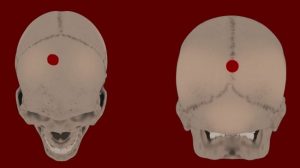Something was amiss at the ruins of Iglesia Colorada, an ancient Incan village in the foothills of the Andes. In the remains of what had been a garbage dump, among ancient food scraps and shards of discarded pottery, researchers discovered four skulls. No bodies, no formal burial, no jewelry to carry on to an afterlife — just the skulls. No one knew why they were there.
For over 15 years, since the skulls were uncovered in 2003, the mystery has baffled archaeologists. But two researchers at the National Museum of Natural History in Santiago, Chile, have proposed an explanation: The skulls paint a picture of an Incan reign of terror, in which the heads of four villagers were put on display as a warning to inhabitants.
The period from the late 1400s to the early 1500s was a tumultuous time for much of South America. During these years, the Incan empire was slowly expanding its reach across the Andes. While civilizations had long existed in the valleys of the Andes, they were mostly isolated, said study co-author Francisco Garrido, the curator of archaeology at the National Museum of Natural History. While some of these places probably joined the empire without much resistance, others weren’t so amenable, he added.
Read more HERE
Ask me anything
Explore related questions





